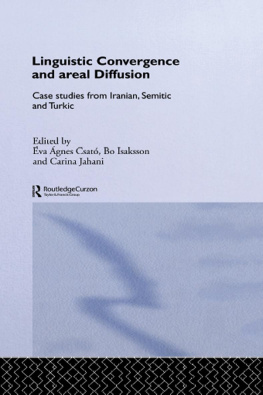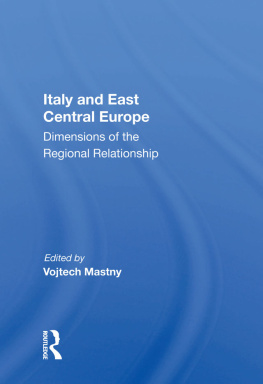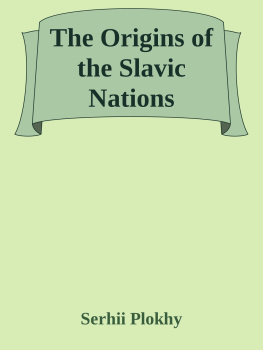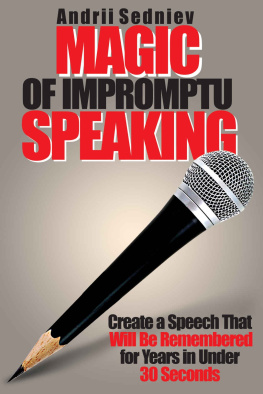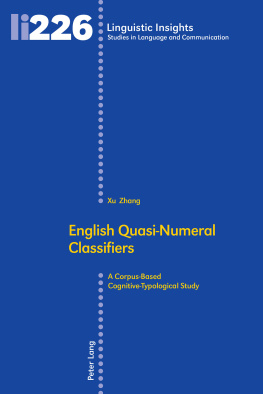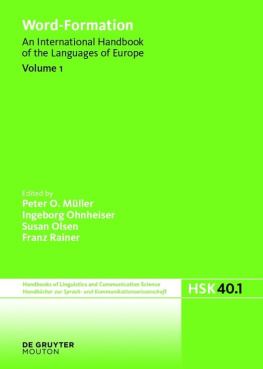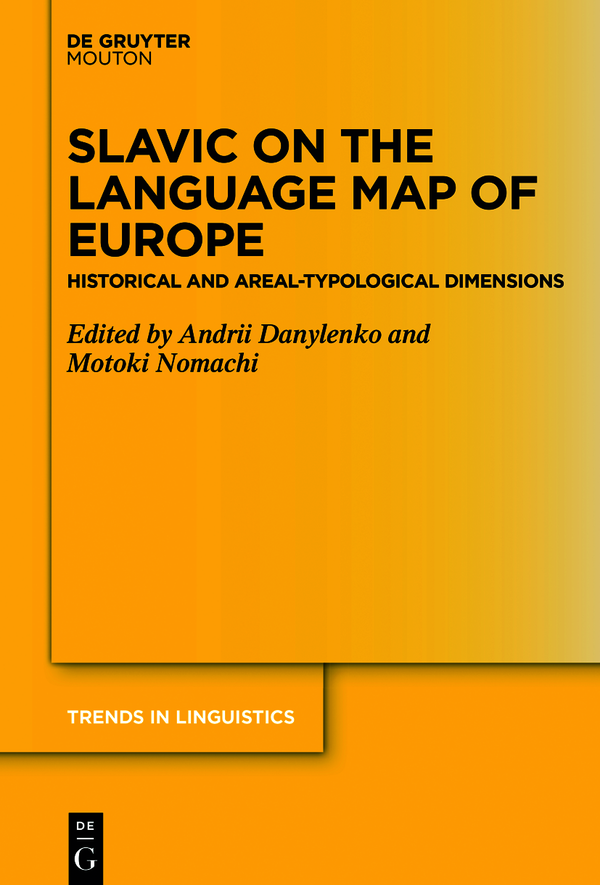Trends in Linguistics Studies and Monographs
Edited by
Chiara Gianollo
Danil Van Olmen
Walter Bisang
Tine Breban
Volker Gast
Hans Henrich Hock
Karen Lahousse
Natalia Levshina
Caterina Mauri
Heiko Narrog
Salvador Pons Borderia
Niina Ning Zhang
Amir Zeldes
Volume
ISBN 9783110634976
e-ISBN (PDF) 9783110639223
e-ISBN (EPUB) 9783110635171
Bibliographic information published by the Deutsche Nationalbibliothek
The Deutsche Nationalbibliothek lists this publication in the Deutsche Nationalbibliografie; detailed bibliographic data are available on the Internet at http://dnb.dnb.de.
2019 Walter de Gruyter GmbH, Berlin/Boston
Contributors
Vt Boek
Czech Academy of Sciences
Department of Etymology
Veve 97, 60200 Brno
Czech Republic
Walter Breu
University of Konstanz
Department of Linguistics
Slavistik, Fach 179
78457 Konstanz
Germany
Andrii Danylenko
Pace University
Dyson College of Arts and Sciences
Dept. of Modern Languages and Cultures
41 Park Row, New York, NY 10038
USA
Bridget Drinka
University of Texas at San Antonio
Dept. of English
Main Building, 1 UTSA Circle, San Antonio, TX 78249-1644
USA
Jadranka Gvozdanovi
Heidelberg University
The Slavic Institute
Schulgasse 6, 69117 Heidelberg
Germany
Bernd Heine
University of Cologne
Institute for African Studies and Egyptology
Nonnenwerthstr. 4850937 Kln
Germany
Helena Kurzov
Czech Academy of Sciences
Institute of Philosophy
Jilsk 1, 11000, Praha 1
Czech Republic
Nataliya Levkovych
Bremen University
Faculty 10: Linguistics and Literary Studies
Universitts-Boulevard 13, Gebude GW 2, 28359 Bremen
Germany
Lidia Federica Mazzitelli
University of Cologne, Slavic Institute
Weyertal 137, 50931 Kln
Germany
Motoki Nomachi
Hokkaido University
Slavic-Eurasian Research Center
Kita 9, Nishi 7, Kita-ku, Sapporo, 060-0809
Japan
Robert Orr
Independent Scholar
2044 Arrowsmith Dr. #104C
Ottawa, ON, K1J 7V8
Canada
Andrej N. Sobolev
Russian Academy of Sciences
Institute for Linguistic Studies
Tuchkov pereulok 9, 199053, St. Petersburg
Russia
Thomas Stolz
Bremen University
Faculty 10: Linguistics and Literary Studies
Universitts-Boulevard 13, Gebude GW 2, 28359 Bremen
Germany
George Thomas
McMaster University
Dept. of Linguistics and Languages
1280 Main Street West, Hamilton, Ontario, L8S 4L8
Canada
Paul Wexler
Tel-Aviv University
Dept. of Linguistics
Webb, 405, Ramat Aviv, 69978, Tel Aviv
Israel
Bjrn Wiemer
Johannes Gutenberg University Mainz
Institute for Slavic, Turkic and Circum-Baltic Studies
Jakob-Welder-Weg 18, 55099 Mainz
Germany
Searching for a place of Slavic in Europe as a linguistic area
Andrii Danylenko
Introduction
This book is a collection of chapters largely based on the papers delivered at the International Symposium, Slavic on the Language Map of Europe, which took place on August 811, 2013 at the Slavic-Eurasian Research Center of Hokkaido University in Sapporo (Japan). Inspired by vivid discussions during the symposium and numerous conversations with the participants in the aftermath of this event, the editors came up with an idea of preparing a comprehensive volume focusing exclusively on the areal-typological and historical sampling of Slavic as compared with other, primarily neighboring, languages used in Europe.
There were several reasons behind the initial intention to bring together scholars working in areal and historical linguistics. As recent research shows, Europe can be safely conceived as a linguistic area of some kind ().
When the idea of organizing a symposium was first hatched in 2011, it was clear to the editors that the place of Slavic in the linguistic landscape of Europe had often been discussed controversially in scholarly literature. To adduce a few examples, some authors treat Slavic languages as more marginal ).
The volume is composed of an introduction and 14 chapters written by renowned scholars and leading specialists in various fields of linguistics from North America, Europe, Israel, and Japan. The authors deal with evidence from both macro and micro Slavic languages spoken in Europe, while introducing new empirical data and theoretical generalizations about language contact and grammaticalization in different Slavic languages and their near and distant neighbors. What is most commendable is the fact that some of the studies are premised on the results obtained from fieldwork and linguistic experiments.
The book sheds light on some methodological and descriptive issues related to Slavic as viewed from the areal-typological and historical perspective (see , also in this volume).
First, the chapters offer new insights into a number of theoretical issues, including language contact, grammaticalization, mechanisms of borrowing, the relationship between areal, genetic, and typological sampling, conservative features versus innovation, and socio-linguistic aspects of linguistic alliances conceived of both synchronically and diachronically.
Second, the volume integrates new approaches towards the areal-typological profiling of Slavic as a member of several linguistic areas within Europe, including SAE ().
Third, some of the studies in this book concentrate on structural affinities between Slavic and other European languages that arose as a result of either grammatical replication or borrowing (see , pattern replication or borrowing of matter. Special emphasis is placed in those chapters on contact-induced grammaticalization, especially in Slavic micro-languages such as Molise Slavic and Kashubian.
When working on the volume, the editors focused on the relationship of the three key notions that essentially triggered the inception and subsequent realization of this project, to wit, language contact, grammaticalization, and areal grouping. Indeed, the intimate interrelation of these notions is more than obvious, a fact which is reflected in the structure of the proposed volume.
Uncontroversial though the aforementioned connection might seem, some explanation of these notions is in order here.
Areal grouping
To begin with, the discussion of areal groupings in Europe has recently displayed an obvious bias in favor of the Western European languages, a bias which appears even more pronounced in the treatment of SAE as a linguistic unity (), but divorced from its Ukrainian neighbor, can hardly produce an adequate areal-typological and historical picture of the languages used in the area around the Baltic Sea.
: 115117). To use the same assessment framework, the default form is assigned today to the most advanced (core) languages of SAE (French, northern Italian dialects, German and Dutch) while the periphery Slavic languages, with rare exceptions (like Polish), characterized by a minimum of default features, appear inferior or underdeveloped in terms of the level of their convergence within Europe as a linguistic area.


